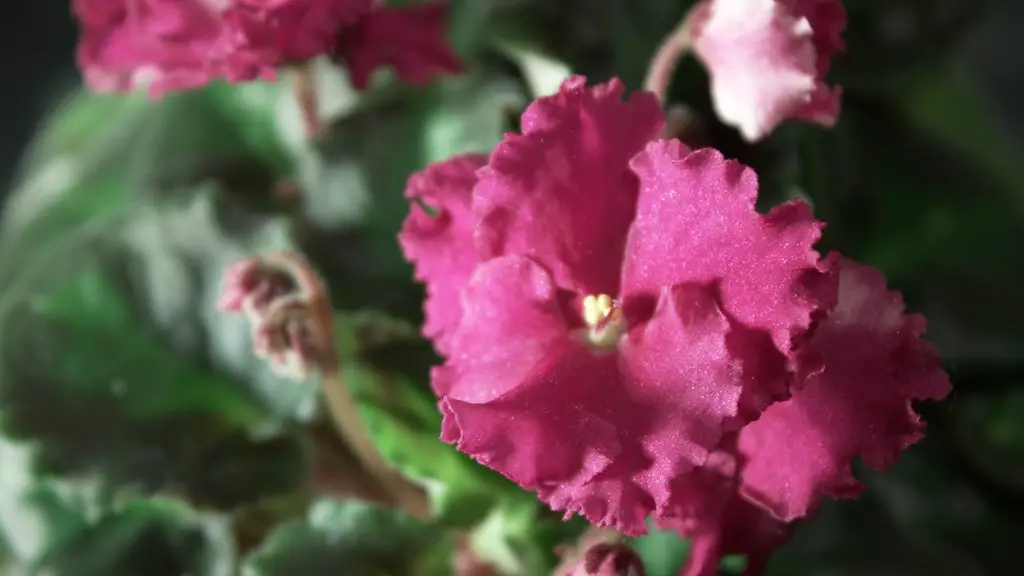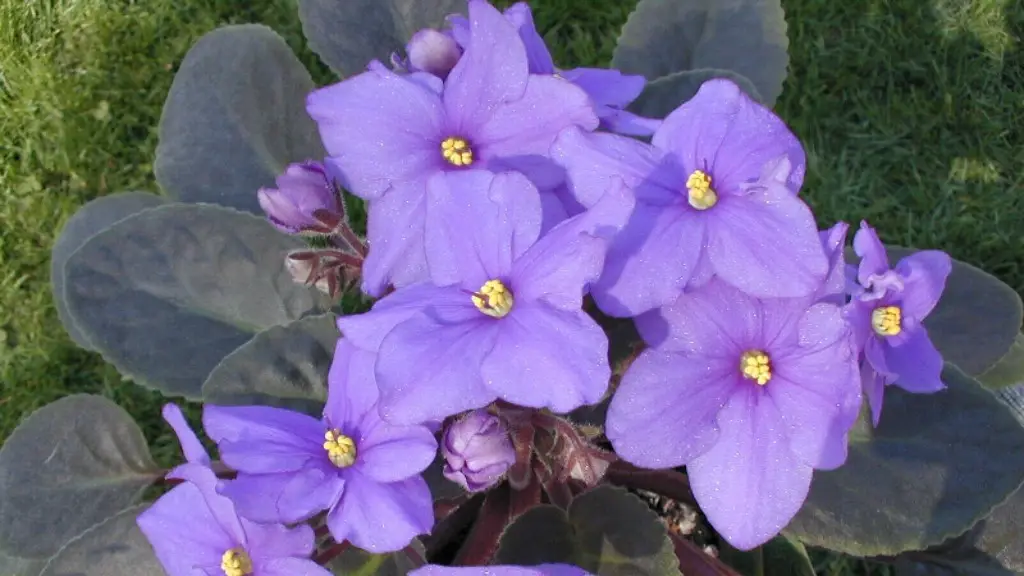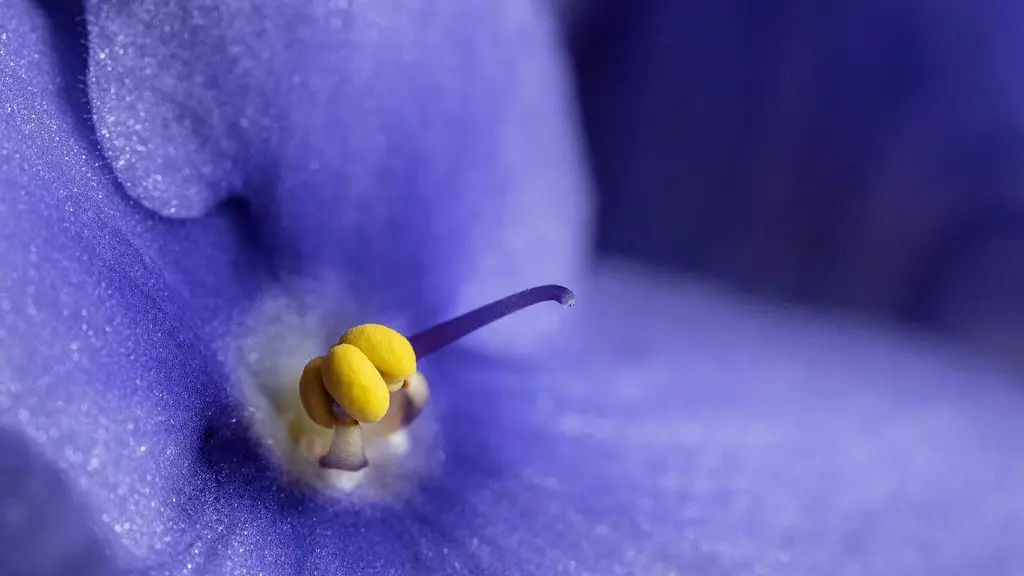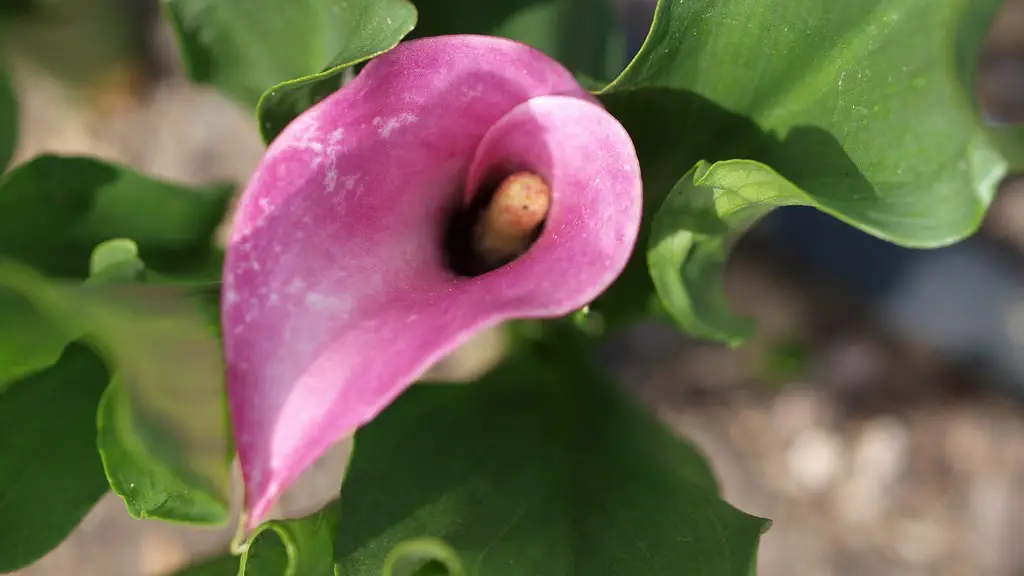An African violet is a beautiful and exotic plant that is native to Africa. They are very popular houseplants, and are relatively easy to care for. African violets can be found in many different colors, including purple, blue, pink, and white.
African violets need bright, indirect sunlight in order to flourish. They also need to be watered regularly, but be careful not to overwater them. The soil should be moist, but not soggy. These plants also benefit from being fertilized every few weeks.
If you follow these simple tips, you should have no problem growing healthy and beautiful African violets indoors.
To grow African violets indoors, you will need a south-facing window, a potting mix made specifically for African violets, and a watering can with a very fine nozzle. Place your African violet in the potting mix and water it gently, being careful not to get water on the leaves. Allow the soil to dry out slightly between watering. In the spring and summer, you can fertilize your African violet with a water-soluble fertilizer made for houseplants.
How often should I water an African violet?
A wicking system is a self-watering system that delivers water to the plant roots on a regular basis, ensuring that the plant never dries out. This type of system is very easy to set up and maintain, and is an ideal solution for those who want to ensure their African violets are always healthy and hydrated.
African violets need indirect sunlight to thrive. A north- or east- facing window is ideal for best results. Keep plants away from cold glass and rotate the pot once a week so all leaves receive light. During winter months, extend daylight by placing African violets under a grow light.
How do you get African violets to bloom
Houseplants are a wonderful way to add some life and color to your home. However, it’s important to make sure they are getting the right amount of sunlight. Too little sunlight will cause them to stretch for the light and produce few or no flowers. Too much sun can burn the leaves. An east-facing window is ideal, especially with a sheer curtain to block the sun’s harshest rays. They also need eight hours of darkness every night.
It is best to water African violets from the bottom. This allows the water to directly reach the roots without wetting the leaves. It is important not to use cold water; lukewarm or warm is preferred. If you water from the top, be careful not to get water on the leaves when the plant is in the sun; this is to avoid leaf spots.
Should African violets be misted?
When watering your African violet, be careful not to mist the foliage as this can cause permanent leaf spotting. Use room temperature water and avoid saturating the crown of the plant as this can lead to crown rot.
To ensure that your African violets are getting the best possible water, it is recommended to use distilled or reverse osmosis water. This will help to remove any impurities that may be in your tap water.
What is the secret to growing African violets?
For the best color and blooms, grow plants in bright, indirect light. An ideal location is a plant stand three feet away from a west- or south-facing window. Plants will still grow when situated right beside north- or east-facing windows, but leaves will be thin and spindly, and plants less likely to bloom.
To ensure that your African violet is able to properly absorb nutrients, it is important to maintain slightly acidic conditions in the potting soil, between a pH of 58 and 65. In conventional soil, these levels can be difficult to achieve, so peat moss is often used to lower the pH and create a more optimal environment for the plant.
Do African violets need deep pots
African violets need breathable, shallow pots so their roots can spread out. Be sure to include drainage holes in the pot so you can water from underneath. African violet specific pots often have a terra cotta sleeve you plant in, as well as a water reservoir.
Some people love wild violets for their decorative qualities, while others find them to be pesky weeds because of their aggressive growth habits. Wild violets can be difficult to control, making them a problem for many homeowners. If you are struggling to control wild violets in your yard, consider consulting with a professional landscaper or gardener for help.
When should I repot my African violet?
repotting an African Violet is important for two reasons:
1) it allows the plant to keep growing, and
2) it encourages new growth.
repotting should be done with fresh potting soil, twice a year or more. At the very least, an African Violet should be repotted whenever the plant becomes rootbound, ie, the Violet has outgrown its current pot to the extent that its roots are growing out and around the rootball.
Epsom salts provide plants with essential magnesium and sulfur – two minerals needed to produce beautiful blooms and healthy foliage. African violets need these same two minerals to grow and bloom beautifully, so adding Epsom salts to their watering routine is a great way to give them a boost. To do so, mix one and a half teaspoons of Epsom salts in a quart of tepid water and swirl to dissolve. Then water your African violets (below the leaves) with this solution once a month.
How long should African violets sit in water
If you notice that your African violet’s leaves are starting to brown and curl at the edges, it’s likely that they aren’t getting enough water. Make sure to give your plant enough water so that the soil is moist, but not soggy. Also, be sure to let the water sit for a bit before giving it to your plant so that it isn’t too cold.
If you want your African violet to live a long time, you need to repot it every few years. The best time to repot an African violet is in the spring, after the plant has flowered. Use a well-draining potting mix and a pot that is only slightly larger than the plant. Water African violets regularly, but let the soil dry out between watering.
Where is the best place to keep African violets?
African violets need bright, indirect light in order to thrive. A spot near an east or north-facing window is often a good option. However, do not place them in direct sunlight, as this can damage the leaves. If you don’t have a suitable window, you can place them under a fluorescent light fixture with two 40-watt bulbs.
If your African Violet plant has been over-watered, the soil will retain too much water and this will cause the leaves and/or leaf stems to turn soft, limp or mushy. If you notice your plant starting to wilt, check the soil to see if it is too wet. If it is, let the plant dry out for a day or two before watering it again.
Warp Up
To grow African violets indoors, you will need a south-facing window, a grow light, and a humidifier. Place your African violet near the window, and make sure it gets at least six hours of sunlight per day. If it doesn’t get enough natural light, supplement with a grow light. African violets also like high humidity, so using a humidifier will help keep the leaves from getting too dry. Water your African violet when the soil is dry to the touch, and fertilize monthly with a water-soluble fertilizer.
There are a few key things to remember when growing African violets indoors. First, they need bright, indirect light. African violets also like to be in warm, humid environments, so be sure to mist them regularly. Lastly, make sure to fertilize your African violets about once a month for optimal growth. With a little care, you can enjoy these beautiful plants indoors all year long!





